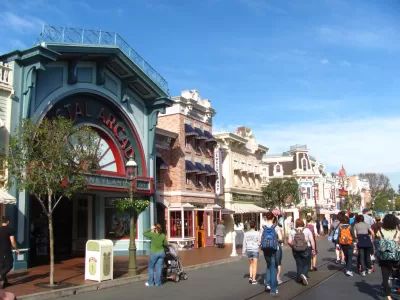A new breed of preservation has sprung up in Toronto, where existing structures are partially preserved to give new building's old facades. But is this attempt to preserve the existing streetscape actually succeeding?

Writing in TreeHugger, Lloyd Alter looks at a new trend in Toronto which has seen the city try to preserve the authenticity of it's streetscape through artificial means. The term "urban taxidermy," used by landscape architect, planner, and architect Robert Allsopp in an article for Toronto's NOW magazine, is used to describe current development requirements in Toronto's Yonge Street Heritage Conservation District that sees "the front 30 feet of existing old buildings are preserved (so it is much more than just facadism) and new condos are built behind and above, in an attempt to preserve the streetscape."
Urban taxidermy seems to be the most popular current compromise between complete heritage preservation and massive, wholesale redevelopment. Instead of facades, we are keeping large pieces of a building's fabric, but what remains gives only the illusion of a vital, fully functioning, street-related structure. What once sustained street life is being replaced by inert material.
...
Is it worth keeping these buildings? Yes, of course, but do we have to kill, stuff and mount them for them to survive? They are more than historical artifacts, bricks-and-mortar facades with finely detailed sills and cornices. They are part of an economic, social and cultural ecology that cannot be disassembled.
As Alter notes, the preservation of the building frontages does little to activate the streets in the short term. The authenticity of the building's place in the neighborhood eco-system is degraded, creating what Robert Allsopp describes as a streetscape diorama which requires a "suspension of disbelief."
FULL STORY: Jargon Watch: Urban Taxidermy

Planetizen Federal Action Tracker
A weekly monitor of how Trump’s orders and actions are impacting planners and planning in America.

Restaurant Patios Were a Pandemic Win — Why Were They so Hard to Keep?
Social distancing requirements and changes in travel patterns prompted cities to pilot new uses for street and sidewalk space. Then it got complicated.

Map: Where Senate Republicans Want to Sell Your Public Lands
For public land advocates, the Senate Republicans’ proposal to sell millions of acres of public land in the West is “the biggest fight of their careers.”

Maui's Vacation Rental Debate Turns Ugly
Verbal attacks, misinformation campaigns and fistfights plague a high-stakes debate to convert thousands of vacation rentals into long-term housing.

San Francisco Suspends Traffic Calming Amidst Record Deaths
Citing “a challenging fiscal landscape,” the city will cease the program on the heels of 42 traffic deaths, including 24 pedestrians.

California Homeless Arrests, Citations Spike After Ruling
An investigation reveals that anti-homeless actions increased up to 500% after Grants Pass v. Johnson — even in cities claiming no policy change.
Urban Design for Planners 1: Software Tools
This six-course series explores essential urban design concepts using open source software and equips planners with the tools they need to participate fully in the urban design process.
Planning for Universal Design
Learn the tools for implementing Universal Design in planning regulations.
Heyer Gruel & Associates PA
JM Goldson LLC
Custer County Colorado
City of Camden Redevelopment Agency
City of Astoria
Transportation Research & Education Center (TREC) at Portland State University
Camden Redevelopment Agency
City of Claremont
Municipality of Princeton (NJ)



























